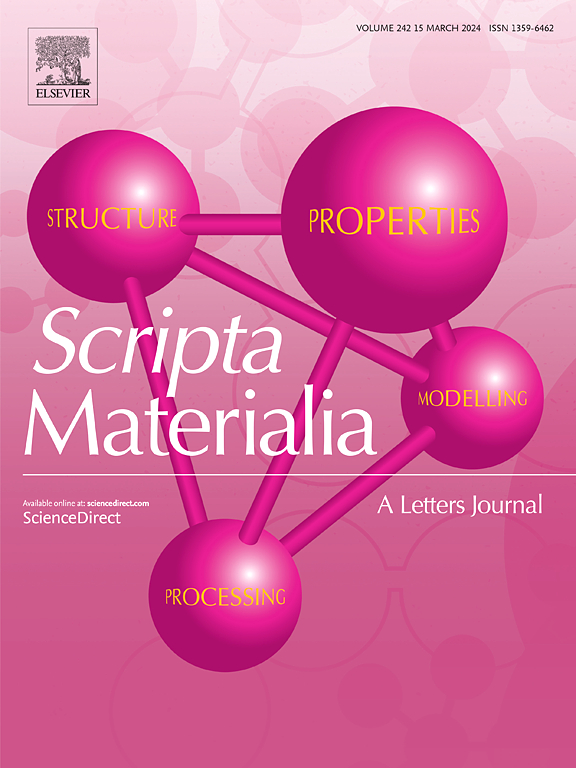多晶钯超快熔化过程中的原子动力学和局部结构紊乱
IF 5.3
2区 材料科学
Q2 MATERIALS SCIENCE, MULTIDISCIPLINARY
引用次数: 0
摘要
固相和液相的主要区别是机械刚性,液体具有允许流动的无序原子结构。虽然熔融是一种常见的相变,但其微观机制仍不清楚。本研究利用分子动力学模拟研究了多晶钯的超快熔化,重点研究了由均方根位移(RMSD)量化的原子动力学与以偏离中心对称为特征的局部结构紊乱之间的关系。在晶体体中,熔化之前是RMSD的逐渐升高和局部无序。当RMSD接近林德曼极限时,晶格缺陷浓度的增加表现为无序度的不连续上升。熔化时,位移迅速增加,表明原子流动。相反,晶界通过位移和无序度的持续增加而熔化,类似于加热时的玻璃化转变。本文章由计算机程序翻译,如有差异,请以英文原文为准。

Atomic dynamics and local structural disorder during ultrafast melting of polycrystalline Pd
The primary distinction between solid and liquid phases is mechanical rigidity, with liquids having a disordered atomic structure that allows flow. While melting is a common phase transition, its microscopic mechanisms still remain unclear. This study uses molecular dynamics simulations to investigate ultrafast melting in polycrystalline palladium, focusing on the relationship between atomic dynamics quantified by the root-mean-squared displacement (RMSD) and local structural disorder characterized by the deviation from centrosymmetry. In the crystal bulk, melting is preceded by a gradual rise in the RMSD and local disorder. As the Lindemann limit for the RMSD is approached, the increasing concentration of lattice defects is manifested by a discontinuous rise in disorder. On melting, the rise is followed by a rapid increase in displacement, indicative of atomic flow. In contrast, the grain boundaries undergo melting through a continuous increase of both the displacement and the disorder, resembling a glass transition on heating.
求助全文
通过发布文献求助,成功后即可免费获取论文全文。
去求助
来源期刊

Scripta Materialia
工程技术-材料科学:综合
CiteScore
11.40
自引率
5.00%
发文量
581
审稿时长
34 days
期刊介绍:
Scripta Materialia is a LETTERS journal of Acta Materialia, providing a forum for the rapid publication of short communications on the relationship between the structure and the properties of inorganic materials. The emphasis is on originality rather than incremental research. Short reports on the development of materials with novel or substantially improved properties are also welcomed. Emphasis is on either the functional or mechanical behavior of metals, ceramics and semiconductors at all length scales.
 求助内容:
求助内容: 应助结果提醒方式:
应助结果提醒方式:


